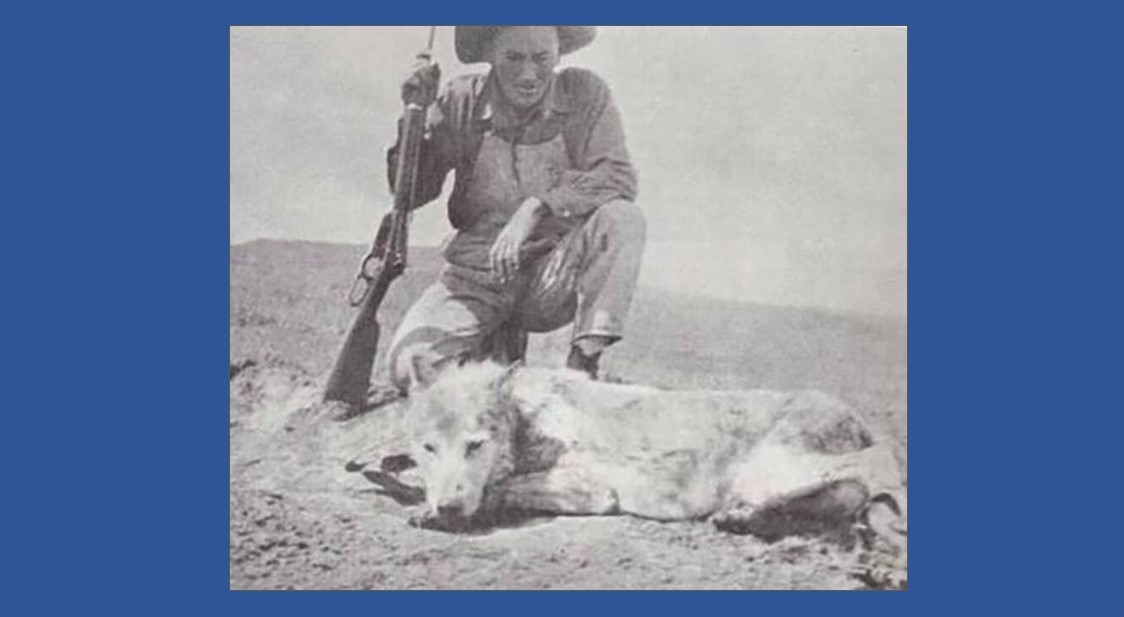HARDING COUNTY, S.D. – Turning in the most pests for bounty in the state with 370 gophers and 30 magpies on July 28, 1924, St. Onge rancher Francis McNeil netted $40. The gophers had a tendency to run in front of his mower, he said, while he and his sons shot the magpies, according to The Daily Deadwood Pioneer-Times.
Pest bounties existed before statehood, with counties and private individuals placing a price on animals that posed a threat to the new agricultural future. In 1899, 10 years after statehood, bounties became state law, according to The Dakota Chief, when the state Legislature placed a price on wolves, coyotes and mountain lions.
McNeil may have been the state’s most prolific pest exterminator 100 years ago, but at the time a threat existed on the other side of the rifle that had outwitted Harding County hunters and trappers for more than a decade.
Among the most infamous animals in South Dakota history, “Three Toes” evaded his bounty for 13 years. According to the Rapid City Journal, the gray wolf had escaped a trap during his youth, losing a digit in the process. That left the predator with an unmistakable track. That calling card of a track earned him credit for more than $50,000 worth of livestock killings before his capture. In today’s terms, that’s nearly $900,000.
At a time when other wolves had a price of $5 on their heads, Three Toes’ wake of livestock kills earned him a bounty exceeding $500.
Ever elusive, Three Toes once outran a well-known hunter who had stationed saddle horses at seven locations to track him. The wolf managed to find time to break into a corral, killing 15 sheep during the encounter. On another occasion the livestock-hungry wolf reportedly stayed ahead of a group of hunters for days, one night sleeping on a hilltop above their camp. The hunters lost the his trail when it faded into remnants of a sheep herd that had trampled his three-toed tracks.
No fence or corral seemed to be able to keep him out. He had once leapt over a 12-foot creek embankment when cornered. Between 1922 and 1924, Three Toes was credited with nearly wiping out all lambs farmed near Buffalo. His biggest kill was 34 sheep in 1924. The next year, he broke his own record, killing 66 sheep over two nights in 1925.
According to the Rapid City Journal, state hunter John Martin took up the trail in 1923. After several failed attempts to trap the wolf, Martin began his chase in 1924. Area ranchers lending fresh horses, Martin followed the notorious killer over 200 miles. Tracks indicated Three Toes had fallen six times from exhaustion, but hopes Martin would soon have his prey were short lived. On the final day of the hunt, the cunning predator found ice where he left no tracks, and when Martin was able to pick up the trail again, he found himself outsmarted with tracks left on both sides of the frozen creek. He also found Three Toes’ tracks circling back up his trail.
Over 150 hunters and several hunting parties had attempted to take down Three Toes, according to Clyde Briggs, a federal hunter and head of predatory animal control brought in by request to exterminate the animal.
On July 23, 1925, two of Briggs’ traps caught the wolf. With only superficial wounds, Three Toes was muzzled and placed in Briggs’ car to be brought to Rapid City alive. According to South Dakota Magazine, the wolf, finally captured, died on the way.
Briggs said of the legendary predator, “Call it a broken heart, or what you will— something of this sort is what killed the old wolf. He was resting easily when found… but there was something in his grand spirit that could not brook capture, and Nature, more merciful than he had ever been, granted him release.”













